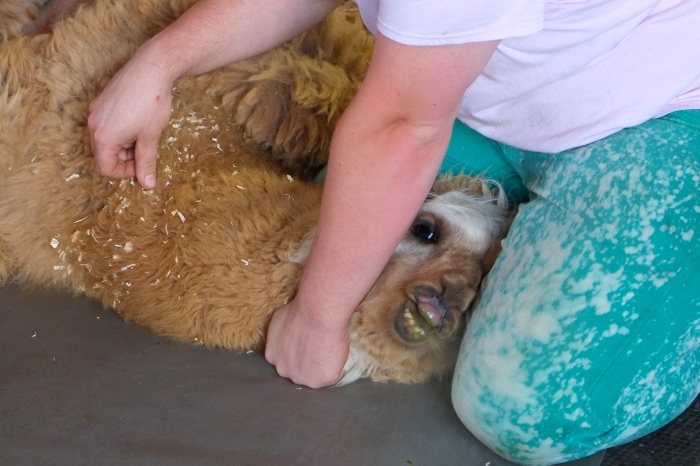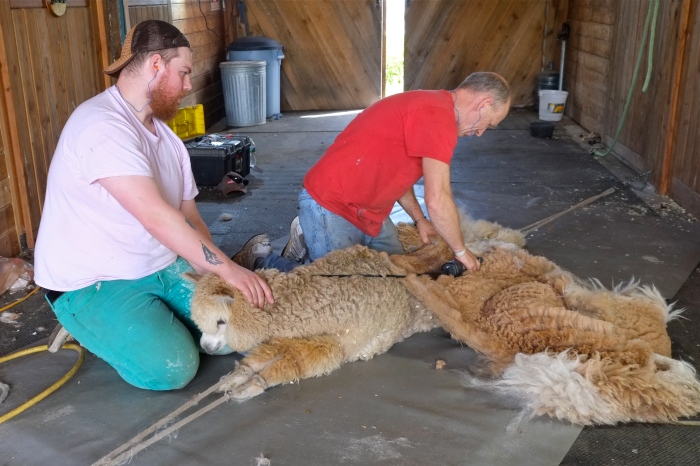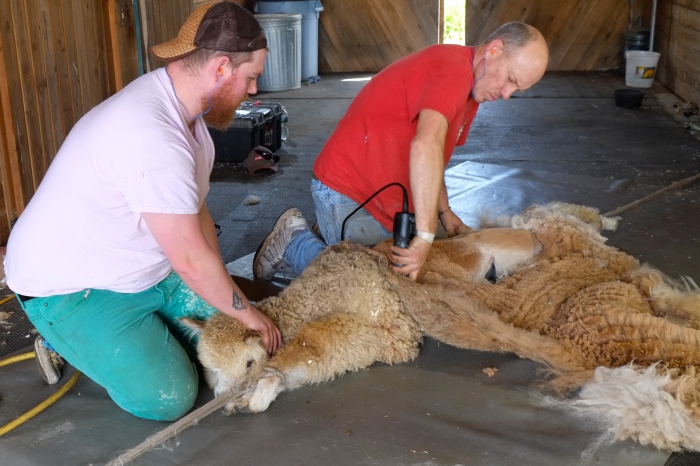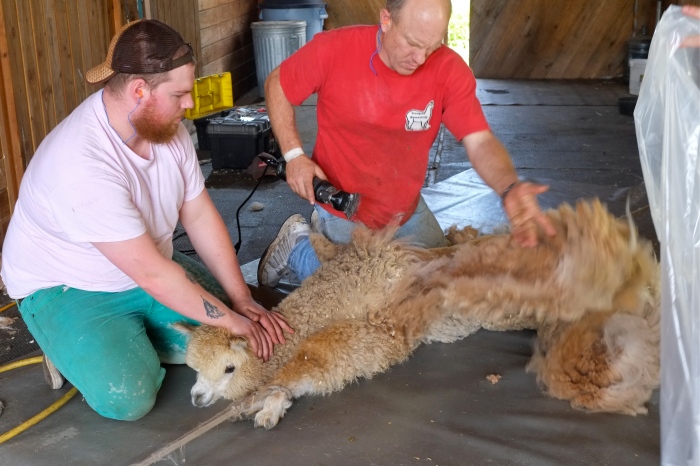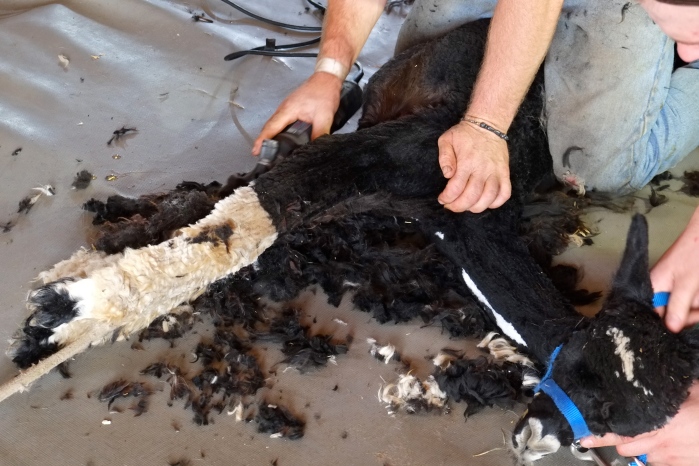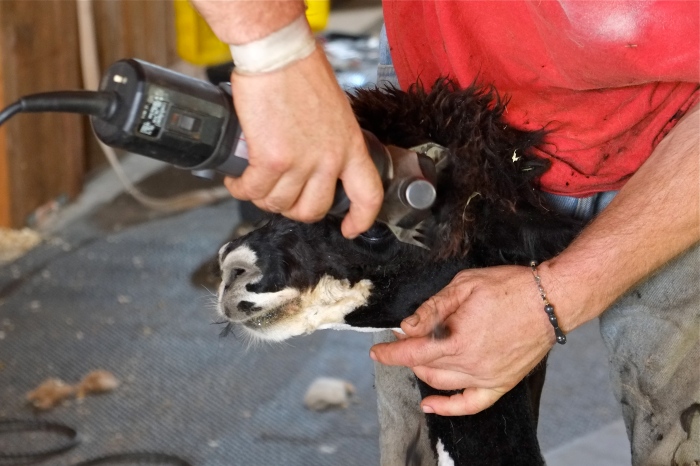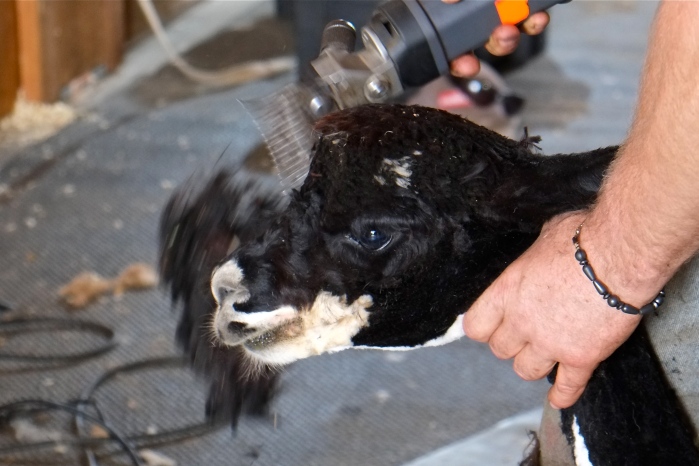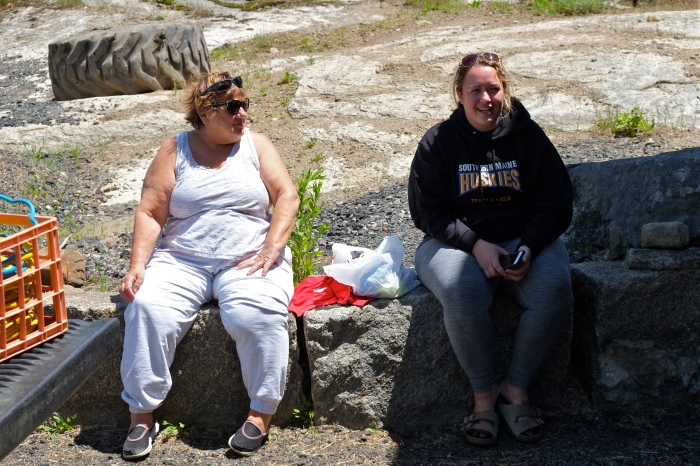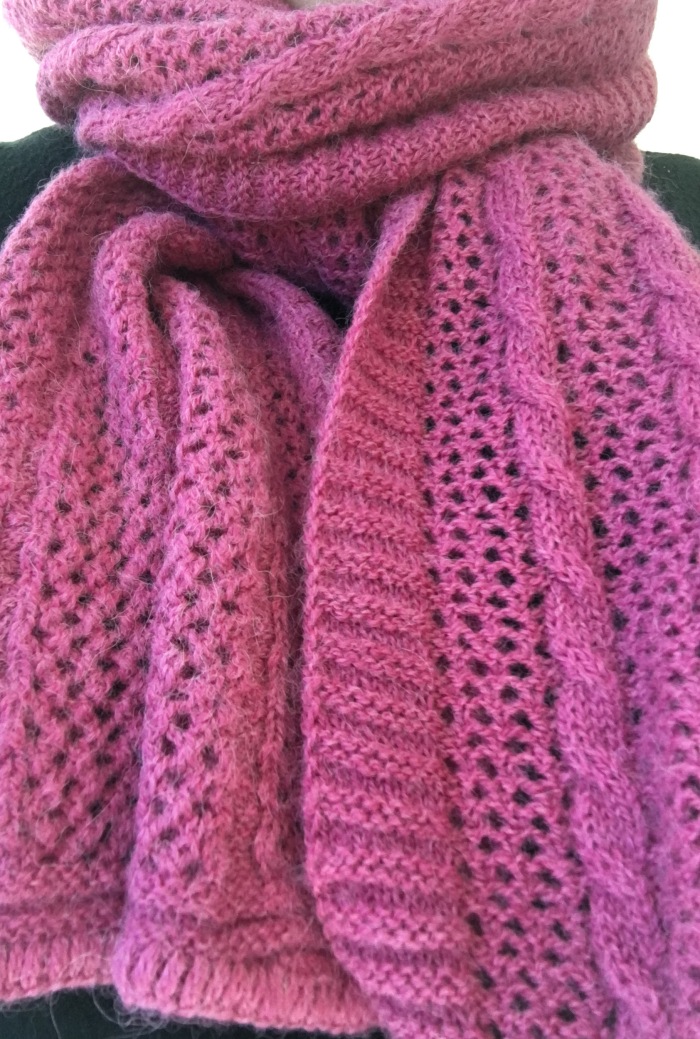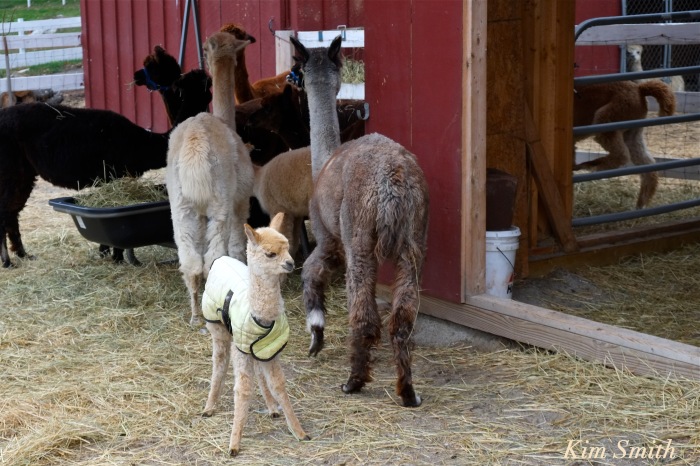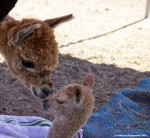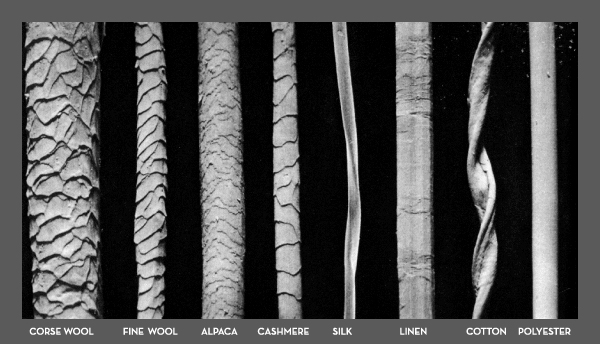 Just like sheep, alpacas need to be shorn at least once a year. Their beautiful fleece is so thick by the time spring comes along, the animals would suffer tremendously in warmer weather if not shorn.
Just like sheep, alpacas need to be shorn at least once a year. Their beautiful fleece is so thick by the time spring comes along, the animals would suffer tremendously in warmer weather if not shorn.
 Family and friends lend a hand for alpaca shearing day.
Family and friends lend a hand for alpaca shearing day.
 Malcolm Cooper arrived Sunday morning with his assistant Krystian Hoszkiewicz.
Malcolm Cooper arrived Sunday morning with his assistant Krystian Hoszkiewicz.
 Expert shearing, with a firm but kind touch.
Expert shearing, with a firm but kind touch.
 Andrew Spinney from Paynter Saltwater Farm in Essex brought three of his alpacas for shearing, along with Maggie the sheep. Maggie likes getting shorn, so much so that she turned into an acquiescing blob of jello.
Andrew Spinney from Paynter Saltwater Farm in Essex brought three of his alpacas for shearing, along with Maggie the sheep. Maggie likes getting shorn, so much so that she turned into an acquiescing blob of jello.
 Angela administers a monthly shot to prevent parasites.
Angela administers a monthly shot to prevent parasites.
Here’s Nikki helping with the Paynter alpacas. Next is an after-shearing photo, with the Marshall’s daughter Jennifer. What a difference!
Alpaca lower teeth and upper dental pad.
Alpacas only have bottom teeth. On the top they have a hard dental pad. Alpacas eat by trapping grass between their teeth and the dental pad, and then nipping it off. Some alpacas are genetically pre-disposed to misaligned teeth and need to have their teeth trimmed. If the teeth were not trimmed, it could lead to eating disorders and starvation. A protective guard is placed in the mouth and the teeth are quickly ground with an electric grinder. It takes all of about 30 second for an alpaca’s dental treatment!
Pippi Longstocking’s first dental check up.
One-year-old alpacas Maisy, Rascal, and Pippi Longstocking had their first shearing. The yarn made from the first shearing is referred to as baby alpaca, and it is silky soft, luxurious, and super warm.
Maggie’s wool is more course and contains lanolin. After she was shorn, you could feel the sticky lanolin on her skin. Because alpaca fleece bears no lanolin, the yarn is hypoallergenic.
 Pippi Longstocking’s first buzz cut.
Pippi Longstocking’s first buzz cut.
Phew, I was exhausted just filming the Marshall Family corral twenty plus alpacas and one tubby little Maggie. The Marshall’s alpacas are beloved family members, each named, and each with a unique personality to go with their name–Pokey, Magnolia, and Rascal, to mention just a few. Animal farming is super hard, non-stop work, especially when the animals are as well taken care of as are the Marshalls.
The public is welcome to come stop by and visit the alpacas. Yarn from the Marshall’s alpacas is available to purchase. At the present time, Angie’s Alpacas is open by appointment. Call 978-729-7180 or email Angela at Angiez65@hotmail.com. Marshall’s Farm is located just next to Marshall’s Farm Stand at 148 Concord Street in West Gloucester.

